How to Fix “0x80073701” Update Install Error on Windows 11
Some Windows 11 users are facing the error 0x80073701 whenever they try to install a cumulative update manually, from an installation media, or by using the Windows Update functionality. In the vast majority of cases, the problem occurs when users try to install the KB5005191 update.

After investigating this particular issue thoroughly, it turns out that there are several different underlying problems that might contribute to this particular install error on Windows 11:
- Common Windows Update glitch – The most disagreeable culprit for this particular issue is an ongoing glitch with the WU component. If this is the case, you should be able to get the issue fix promptly by running the Windows Update Troubleshooter and applying the recommended fix.
- Corrupted Windows Update component – If you’re actually dealing with a corrupted Windows Update component, the only way to fix the issue (without repair installing or clean installing) is to circumvent the usage of WU entirely by downloading and installing the problematic update via an ISO file.
- System File corruption – As it turns out, this particular issue can also occur due to some kind of system file corruption that affects the installation of new features and cumulative updates. In this case, the only viable fixes available are to run SFC and DISM scans in quick succession and escalate to an in-place upgrade or clean install procedure if the issue persists.
Now that you are aware of every potential reason why you might end seeing the 0x80073701 install error on Windows 11, let’s get to a series of verified fixes that other affected users have successfully used to get to the bottom of this issue.
Run the Windows Update Troubleshooter
Keep in mind that if you’re dealing with a glitch that Microsoft is already aware of, there’s a chance the built-in troubleshooter (Windows Update Troubleshooter), is already equipped to handle this issue automatically.
Note: As Windows 11 is approaching the official release Window, new repair strategies are added to every troubleshooter, so don’t skip this method if you didn’t try it already.
The Windows Update Troubleshooter will auto scan for common glitches that might affect the installation of new cumulative and feature updates (including the 0x80073701 error) and see if any of the repair strategies available are a fit to fix the issue.
If you didn’t run this tool already, follow the instructions below to run the Windows Update troubleshooter and apply the recommended fix:
- Open up a Run dialog box by pressing Windows key + R. Next, type ‘ms-settings:troubleshoot’ inside the text box and press Enter to open up the Troubleshooting tab of the Settings menu cluster.
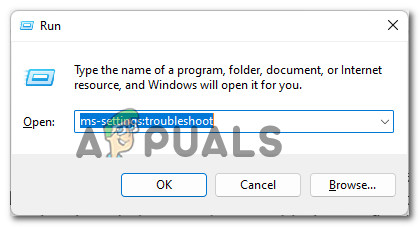
Accessing the Troubleshoot menu on Windows 11 Note: If you’re prompted by the User Account Control, click Yes to grant admin access.
- Once you’re inside the Troubleshoot menu, move over to the right-hand pane and click on Other Troubleshooters at the bottom of the screen.

Open up the Other Troubleshooters tab - Inside the Other Troubleshooters tab, click on the Run button associated with Windows Update.
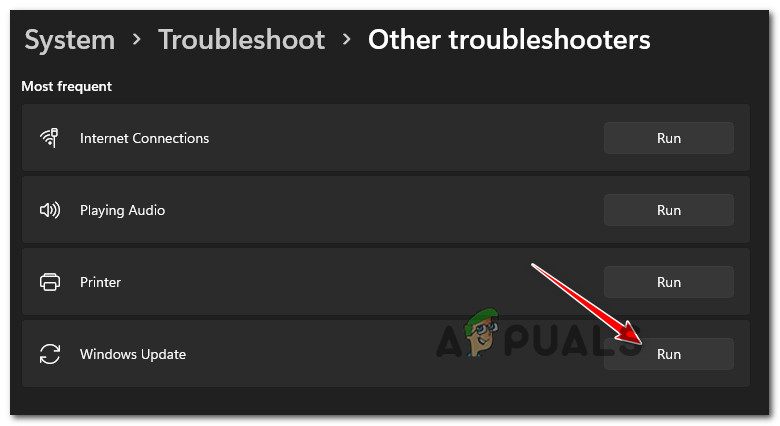
Accessing the Windows Update troubleshooter on Windows 11 - At the initial Windows Update troubleshooter screen, wait patiently until the utility figures out what exactly is the issue with the WU component.
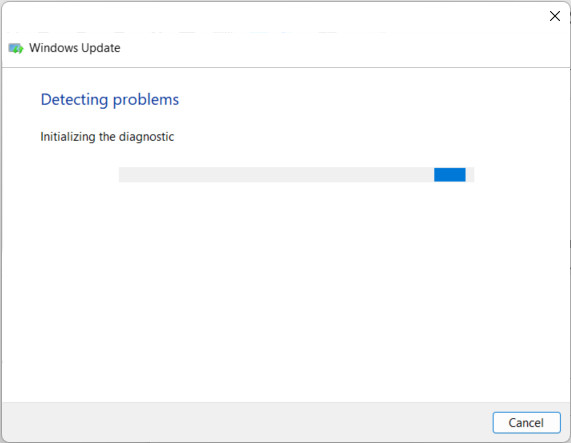
Checking for WU issues - After the operation is complete, you will get an overview of the identified issues. If any repair attempt is labeled as Completed, it means that the utility has successfully identified and dealt with an issue.
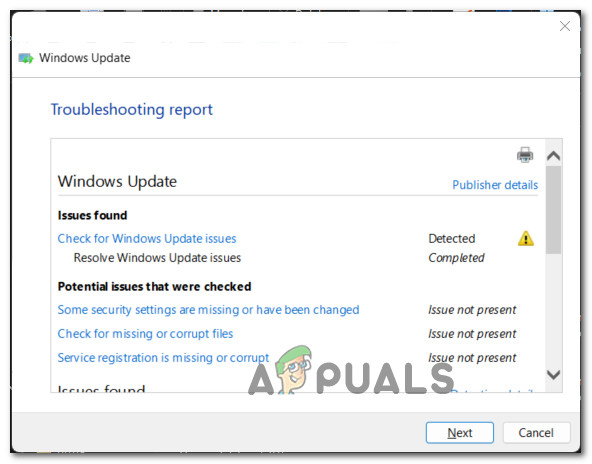
Overview of Windows Update issues Note: Depending on the nature of the fix that needs to be applied, you might need to click on Apply this fix or even follow a series of manual steps.
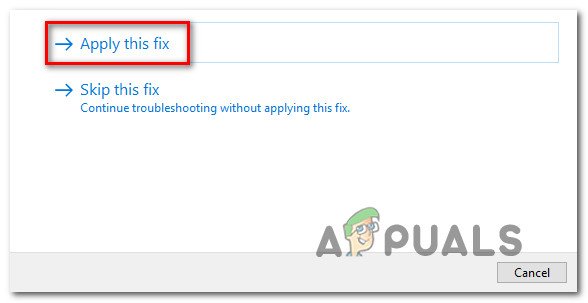
Applying the recommended fix for Windows Update on Windows 11 - After the fix is successfully applied, reboot your PC (even if you’re not specifically instructed to do so) before attempting to complete the installation that was previously resulting in the 0x80073701 error.
In case the issue is still not fixed, move down to the next potential fix below.
Perform an SFC and DISM scan
If you’re dealing with some kind of system file corruption, simply running the troubleshooter will likely not resolve the issue.
Fortunately, Windows 11 has gotten a lot better at dealing with system file corruption and comes equipped with two built-in tools capable of resolving the vast majority of superficial corruption instances (where the kernel is not affected).
If you find yourself in this scenario, initiating two SFC (System File Checker) and DISM (Deployment and Image Servicing and Deployment) in quick succession should allow you to fix the vast majority of corrupted system components (including Windows Update and Windows Installer).
When you get started with these types of scans, our advice is to start with a simple SFC scan.

Note: An SFC scan will not require you to maintain a reliable Internet connection since the utility will just replace the corrupted system files with locally stored equivalents.
Once the operation is finally complete, restart your computer and wait for the next startup to complete.
After your computer boots back up, proceed by deploying a DISM scan. But instead of the ScanHealth procedure, deploy the following command:
dism /online /cleanup-image /startcomponentcleanup
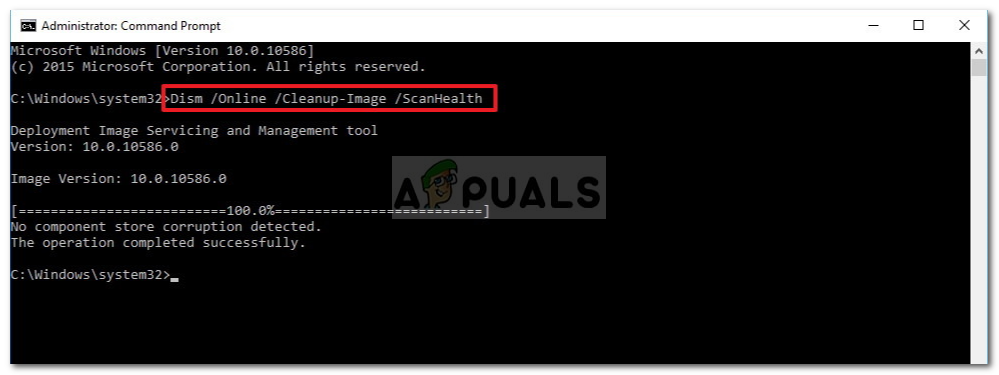
Note: Unlike an SFC scan, this tool will require an internet connection. This is a mandatory requirement since DISM uses a sub-component of WU to download healthy equivalents for the files that need to be replaced.
Once the second scan (DISM) is finished, restart your Windows 11 computer once again and see if the 0x80073701 error is now fixed.
Install the problematic update via ISO file
If the first methods above didn’t work in your case, your only option at this point is to update your Windows 11 build via an ISO file. This particular method was confirmed to be effective by a lot of users that we’re getting the 0x80073701 install error.
This will bypass any corruption instance that is causing the error since the installation will be handled by the mounted ISO file.
Important: In order to be able to deploy this method, you will need to be a part of the Insider Program.
If you meet this requirement, follow the instructions below for step by step instructions on installing the problematic update via the ISO file available through the Insider Program:
- Open your browser and visit the home page of the Windows Insider ISO page.
- Once you’re inside, we’ll need to download the latest ISO of the Windows 11 version that you have installed.
- When you get to the Windows Insider ISO page, you will need to sign in with the same Microsoft account that is tied to the insider program.

Sign in with your Microsoft Account - After you have successfully signed in, scroll all the way down to the Select edition category.
- Next, use the Select Edition drop-down menu to select the same WIndows channel that you’re currently on.
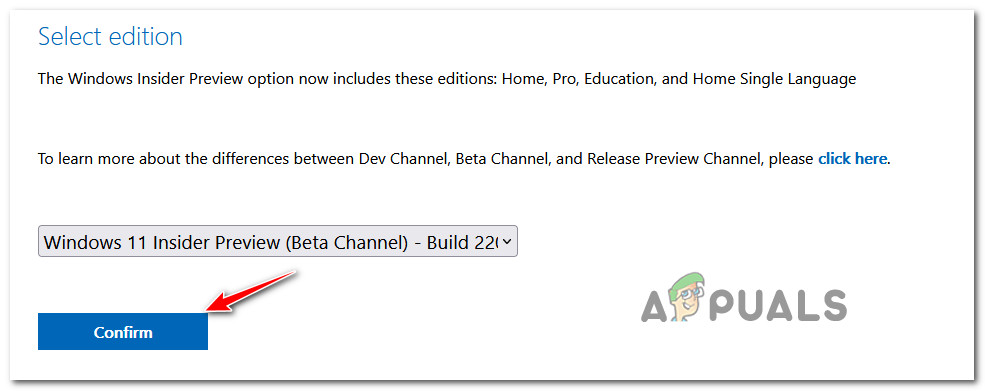
Confirming the Windows 11 dev build you want to install Note: This step is very important, so make sure you pick the correct edition.
- Wait until the request is validated, then select the language from the new prompt that just appeared. After you do this, click on the Confirm button once again.
- After another validation sequence, you will be given a link where you can download the latest ISO build for your Windows 11 version. To download it, simply click on the 64-bit Download button and wait until the download is complete.
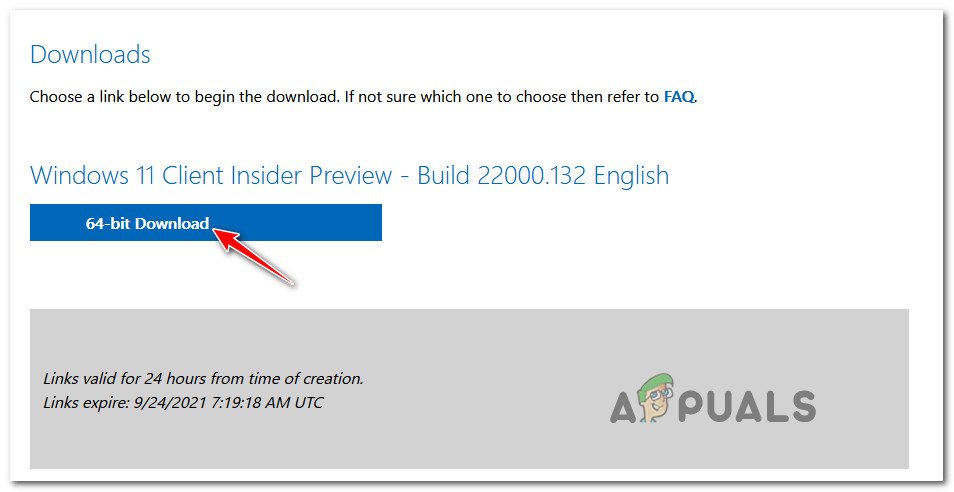
Downloading the correct ISO version - After the download is complete, simply double-click on the freshly downloaded iso and wait for your OS to mount it.

Mounting the ISO - When you’re prompted by the User Account Control prompt, click Yes to grant administrative privileges.
- Once the ISO is successfully mounted, click on Next and wait until the validation is complete.

Accepting the EULA Note: At the EULA prompt, agree to it by clicking on Accept.
- At the next prompt, follow the instructions to install all the missing updates and reboot your PC at the end of this procedure.
In case this attempt fails with the same install error, move down to the final potential fix below.
Perform an in-place upgrade or clean install
In case you’ve already followed every other method recommended above and you’re still dealing with the same kind of issue, chances are you’re dealing with some kind of system file corruption that requires a more radical fix.
If you find yourself in this particular scenario, the best course of action would be to go for a repair install procedure.
Note: This procedure will allow you to replace every system file (that’s potentially corrupted) without losing any personal files. You get to keep personal media (photos, videos), window settings, documents, and even applications and games.
If you want a fresh start, you can also go for a clean install procedure.





